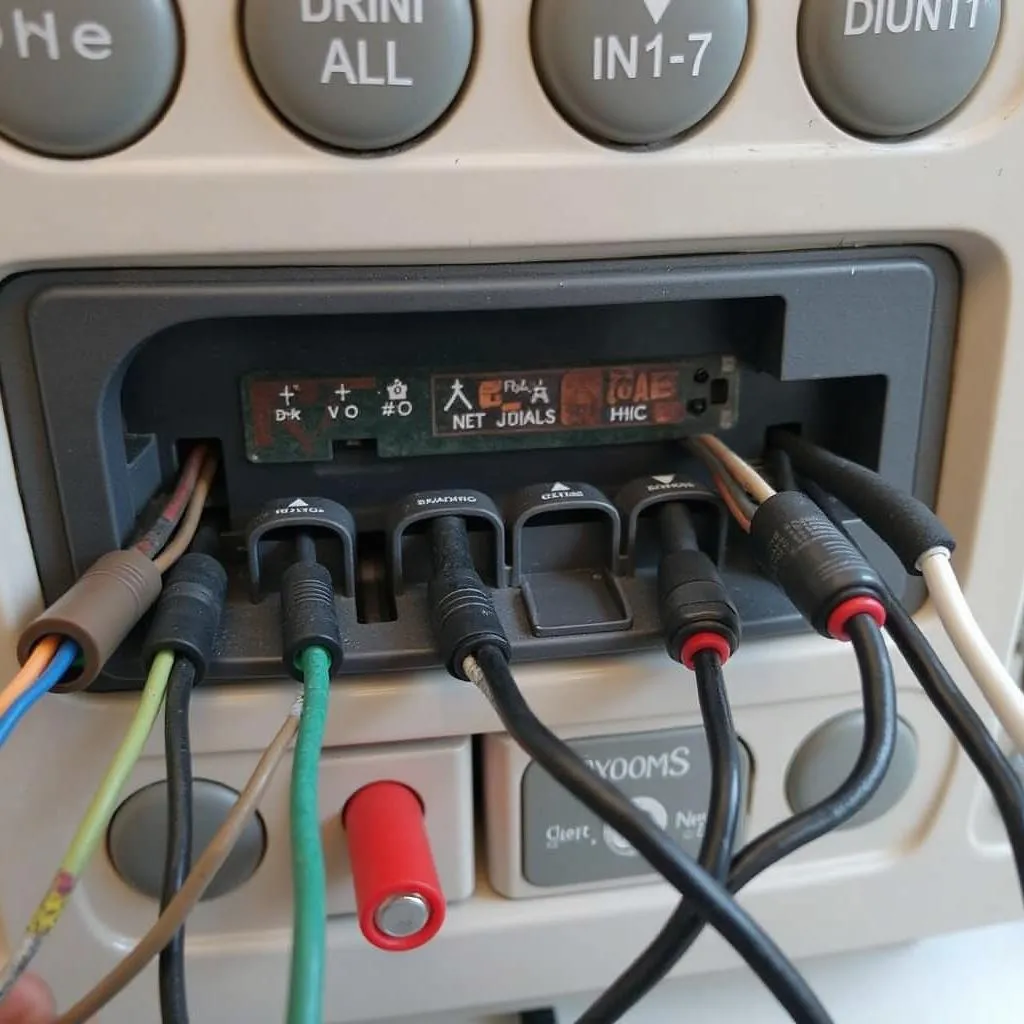The sudden illumination of a brake system warning light on your dashboard can be a heart-stopping moment for any driver. While it can be unnerving, it’s important to remember that these warning lights are your car’s way of communicating a potential problem with a critical safety system. Understanding what these lights mean and taking prompt action can help ensure your safety and prevent further damage to your vehicle.
Deciphering the Brake Warning Lights
Modern vehicles often employ multiple warning lights related to the brake system, each indicating a different issue. Here’s a breakdown of the most common brake system warning lights and what they typically signify:
- Red Brake Warning Light: This light usually illuminates alongside the word “BRAKE” or an exclamation mark within a circle. Its illumination indicates one of several serious problems:
- Parking Brake Engaged: The most common cause is an inadvertently engaged parking brake.
- Low Brake Fluid Level: A significant drop in brake fluid, often due to a leak, can trigger this light.
- Hydraulic System Failure: This critical issue necessitates immediate attention, as it compromises braking ability.
- Anti-lock Braking System (ABS) Light: This light, often displaying “ABS” or a similar acronym, indicates a malfunction within the anti-lock braking system. While your regular brakes may still function, the ABS may not engage during hard braking, potentially leading to skidding.
- Traction Control Light: Displaying a car icon with skid marks or the letters “TC,” this light signals an issue with your vehicle’s traction control system. Like ABS, a malfunctioning traction control system can affect your vehicle’s stability, especially on slippery surfaces.
- Electronic Stability Control (ESC) Light: Often featuring a car icon with skid marks and the letters “ESC” or “ESP,” this light indicates a problem with the electronic stability control system. This system helps prevent loss of control during cornering or sudden maneuvers, and a malfunction requires immediate attention.
Common Causes of Brake System Warning Lights
Understanding the common causes behind these warning lights can empower you to address the issue proactively. Here are some frequent culprits:
- Worn Brake Pads: Brake pads are designed to wear down over time, and excessively worn pads can trigger warning lights. abs and brake system warning lights
- Brake Fluid Leaks: Leaks in the brake lines, calipers, or wheel cylinders can lead to a loss of brake fluid, compromising braking performance.
- Faulty ABS Sensors: ABS sensors monitor wheel speed and help regulate braking force. Malfunctioning sensors can disrupt the ABS system, triggering the warning light.
- Low Brake Fluid: Aside from leaks, low brake fluid can result from factors like worn brake pads or improper maintenance.
- Electrical Issues: Problems with wiring, fuses, or the brake light switch can also trigger warning lights.
 Leaking Brake Fluid Line
Leaking Brake Fluid Line
What to Do When a Brake Warning Light Turns On
When faced with an illuminated brake system warning light, it’s crucial to respond swiftly and cautiously:
- Assess the Situation: If the parking brake is not engaged, pull over to a safe location as soon as possible.
- Check Your Owner’s Manual: Consult your vehicle’s owner’s manual for specific instructions related to the illuminated warning light.
- Check the Brake Fluid Level (If Safe): If you’re comfortable doing so, visually inspect the brake fluid reservoir. Low fluid levels indicate the need for immediate professional attention.
- Avoid Driving (If Possible): If the red brake warning light or any other light indicates a serious issue, avoid driving and contact a qualified mechanic for diagnosis and repair.
- Seek Professional Diagnosis: A professional mechanic can accurately diagnose the underlying cause using specialized equipment and knowledge.
The Importance of Timely Brake System Maintenance
Regular maintenance plays a crucial role in preventing brake system issues. Adhering to the manufacturer’s recommended maintenance schedule, including routine brake inspections and fluid flushes, can go a long way in keeping your brake system in optimal condition.
Remote Diagnostics and Software Solutions: The Future of Brake System Repair
The automotive industry is rapidly evolving, with remote diagnostics and software solutions playing an increasingly important role in vehicle repair. These advancements offer several benefits for addressing brake system issues:
- Remote Diagnostics: Advanced telematics systems allow qualified technicians to remotely diagnose brake system problems. This can be particularly helpful in identifying the root cause of intermittent issues or sensor malfunctions.
- Software Updates and Reprogramming: As vehicles become more reliant on software-controlled systems, remote software updates and reprogramming can address certain brake system issues. For instance, BMW 320d brake warning light reset procedures can often be performed remotely.
FAQs about Brake System Warning Lights
Q: Can I drive with the ABS light on?
A: While you may still have regular braking functionality, driving with the ABS light on is not recommended. The ABS system is crucial for maintaining control during hard braking, and driving without it increases the risk of skidding and accidents.
Q: What does it mean if the brake warning light flashes?
A: A flashing brake warning light often indicates a more serious problem, such as a critical fluid leak or a fault within the ABS system. Seek immediate professional attention.
Q: How much does it cost to fix a brake system warning light?
A: The cost of repair can vary significantly depending on the underlying cause. A simple sensor replacement might be relatively inexpensive, while a complete brake system overhaul can be more costly.
Q: Can I check the brake fluid level myself?
A: Yes, you can usually check the brake fluid level by locating the brake fluid reservoir under the hood. However, if you’re uncomfortable doing so or notice a critically low fluid level, consult a mechanic.
Q: How often should I get my brakes checked?
A: As a general rule, it’s advisable to have your brakes inspected annually or every 12,000 miles. However, consult your vehicle’s owner’s manual for specific recommendations.
Conclusion
Brake system warning lights are critical safety indicators that should never be ignored. Understanding their meanings and taking prompt action can help ensure your safety and protect your vehicle. By adhering to a regular maintenance schedule and seeking professional assistance when needed, you can enjoy peace of mind knowing that your brake system is in optimal working order.

